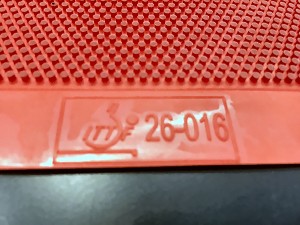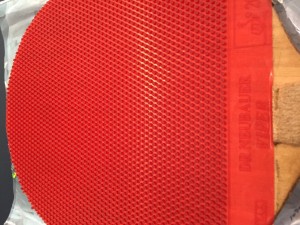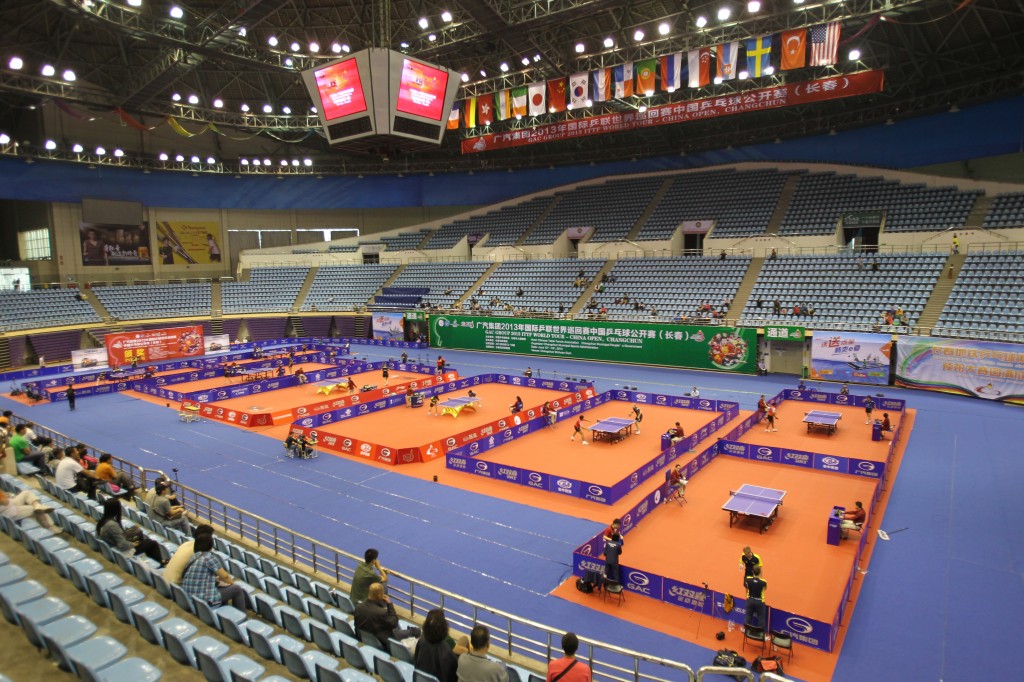
Dr Neubauer Viper Review
Comprehensive details and review of the new Dr Neubauer Viper rubber, a new long pimple rubbers for 2015. The soft long pimples of the Viper are specifically designed for blocking & pushing close to the table, with a low and short bounce off a block, thanks to the soft and speed-dampening pimples. This review is of the Viper rubber in OX (no sponge) and in red.
From the Manufacturer:
Our new rubber VIPER is a major step forward for all long pimple players blocking close to the table.
It’s completely new rubber formula provides very good control so that even fast topspin shots can be handled quite easily.
It’s pimples are soft and help dampening the speed of the ball.
However the main characteristic of this long pimple rubber is the low bounce it produces while blocking. Both passive blocking and chop-blocking provide a disruptive effect that will cause problems to your opponent.
This makes VIPER a highly interesting development in the field of long pimple rubbers with friction.
All standard attacking techniques with long pimples can be performed quite easily.
VIPER is the new preferred choice for blocking close to the table with long pimples, find it out for yourself!
Characteristics:
- Category: Long pimples with friction
- Colours: red +black
- Sponge: OX
- Speed: 55
- Spin: 82
- Control: 85
Comparison to other popular Dr Neubauer long pimple rubbers (click to zoom in):
 Visual inspection
Visual inspection
The Viper comes in a fairly standard package, but with a very cool picture of a Viper!
Opening the package reveals the rubber with an attached glue-sheet, along with instructions advising on how to glue the rubber to the blade.
The pimples feel quite soft, are quite closely spaced together, and have some definite grip. Here are some closeup pictures:
When peeling the rubber off the white backing sheet, you can see that Viper base-sheet is quite translucent. As such, I would not recommend you glue a red sheet of Viper onto a dark blade or a blade with writing or graphics, as anything dark would clearly show through.
Comparing the Viper with another soft and very popular long pimple, the Tibhar Dtecs, and you can see structure is very different, in fact almost the complete opposite (click to zoom in):
Test Setup
I decided to test the Viper (OX red) on my spare Re-Impact Smart blade, since this is the blade I normally use, and this allows me to do a good comparison to my usual long pimple rubber, the Tibhar Dtecs OX.
I used Donic formula first glue, which is what I usually use for OX sheets, as it’s very thin and spreads more evenly. As the Dr Nuebauer instruction recommended, I put a layer on both the blade and the glue sheet (after removing the backing), before applying it to the blade.
Despite the Viper sheet being so translucent, it did not appear to make the sheet look too dark. Here you can see it compared to Dtecs on my other Smart blade:
Review
Blocking against topspin: At low speed the ball grips a little on the pimples, producing a higher but slow ball that seems to be floating with little backspin. A chop block is required to keep these balls low, and this works very well, producing good backspin. Although some of the balls were a little high (when passive blocking), they seemed to move around quite a bit and not easy to attack, which is probably caused by the soft pimples that bend so easily.
At medium to high impact the trajectory drops quite a bit, producing a low & short balls with good backspin, as implied by the manufacturer’s description. The pimples absorb the speed very well, unless the impact was very high (which is hard to handle with any OX long pimple). This rubber is very effective for blocking (passive & chop blocks) and is really good for blocking to the angles.
Compared to Dtecs, Viper’s spin reversal is less but it’s considerably slower and takes the pace off much better. Similar to dtecs, it produces many awkward balls, adding an element of unpredictability to it that the dtecs is well known for.
Chopping away from the table: Against slower to medium pace loops, the soft pimples of the Viper allows you to really load up the backspin, produce very heavy backspin balls, even heavier than with Dtecs, which gave my opponent big troubles. As the pace picks up, you need to make sure your stroke is fast enough, as you’ll continue to return very high backspin. The Viper takes the pace of much better than Dtecs, so you can swing hard and still land the ball on the table.
Chopping against topspin at mid to far distance produced very good backspin too. At high impact the Viper gave the bat a harder feel compared to the dtecs, and it produced a flatter (lower) trajectory, but I’m not sure if it produced quite as much backspin. Although I prefer the softer feel of the dtecs, I seemed to have no trouble controlling the Viper at all, and my opponent had just as much trouble lifting the balls.
I suspect the wider pimples of the dtecs provide more cushioning and less bending, giving it a softer feel, while the Viper pimples bend more, potentially producing more reversal at high impact.
Returning serves: The relatively slow but slightly grippy and soft pimples makes the Viper particularly versatile for returning serves.
Short serves can be returned very short and low with ease. A slight brushing action provides control in doing this. These serves can also easily be flicked, as the soft pimples and grip make it much easier to grip the ball. I found myself attacking short serves with relative ease, whether backspin, topspin or no-spin, and it’s certainly a lot easier than with Dtecs which has too little grip to attack topspin or no-spin consistency.
Against backspin: Waiting for a backspin ball so that one can attack with the pimples is a common strategy for long pimple players as it can produce such awkward balls that can be hard to attack.
Pushing aggressively with the Viper worked very well, producing decent reversal and a nice sinking ball. As with all long pimples, I expect the reversal to improve as the sheet is worn in a little.
Attacking (hitting) these balls with the Viper seemed even more effective, and the soft pimples add just a little grip, which makes it so much easier to attack backspin balls. I find that attacking with just a little side-swipe action is the most consistent way to attack with OX pimple, as the slight brushing action provides significantly more control in both depth and direction.
Conclusion
It’s really good to have another soft long pimple on the market, as most pimples seem to be medium or hard. Softer pimples tend to offer more unpredictability in the amount of spin it returns, and the Viper is no exception.
The Viper clearly excels close to the table, where is offers great versatility in returning serves, offers good reversal and braking effect against loops, and is effective at pushing or attacking against backspin. If you block loops off the bounce, you can easily get short balls with good angles and good spin reversal, this rubber excels at this.
Away from the table, the Viper allows good spin manipulation and very high backspin against slow to medium pace loops, and offers good spin reversal at high impact as the pimples bend completely.
I will continue testing the sheet to see how effective it works in actual games, and this will also allow me to get an idea of durability.










Good for blocking, chopping and lifting but pimples are not durable.. After 2 weeks of use, I’ve broken 2 pimples already.
Strange, I’ve used mine for a whole season (in OX red) and I’ve not lost a single pimple yet.
From your review, Viper sounds significantly like Giant Dragon’s Cropcircles both in softness, structure, and playing characteristics. Have you been able to compare?
I used DHS 40+ plastic balls for testing.
The lack of spin reversal for your rubber may be more due to the 0.5mm than the different ball or rubber, because OX always offers a lot more spin reversal.
Can you tell me if you were using the new polyball? I find my Joola Octopus completely lacking in spin reversal after returning a couple of loops then good players drive through it for a kill. I have 0.5mm sponge now as I couldn’t attack with Ox so I can at least do that but the missing spin reversal is annoying. I used Ox with the celluloid ball and got masses of reversal and could attack at will. Very frustrated!
That’s a really good question. I’m afraid I’ve not yet tried it on another blade, but will update the review once I’ve done it.
Hi Alex, thanks for the great review. How much difference will the blade make when using this rubber for blocking up to the table eg a thick core balsa blade vs thinner non balsa blade?
Thanks